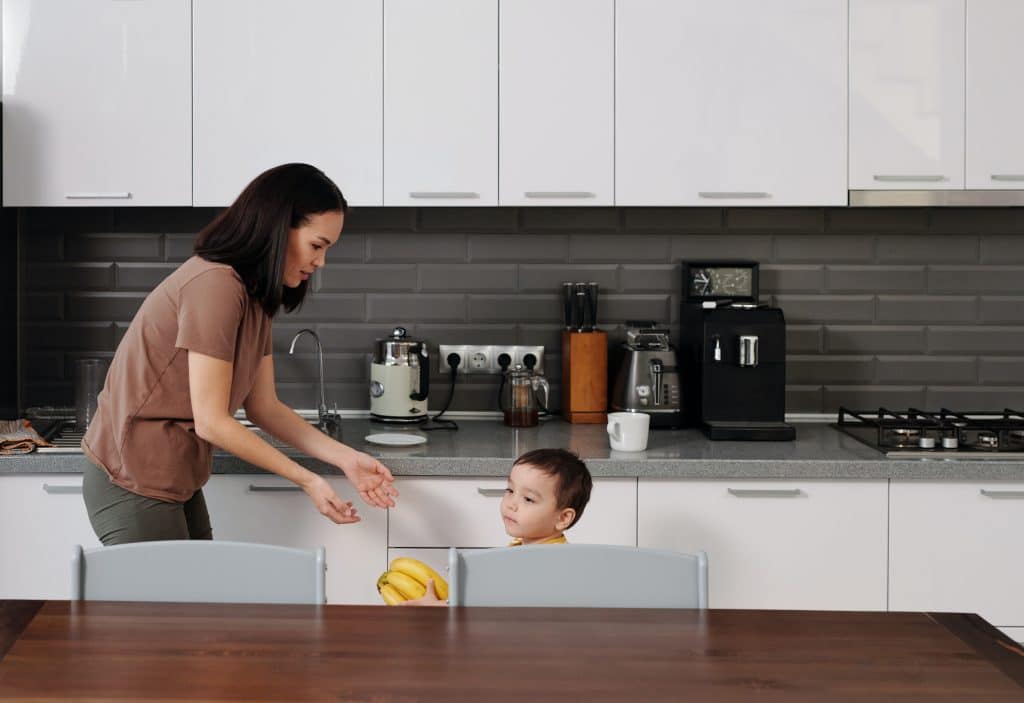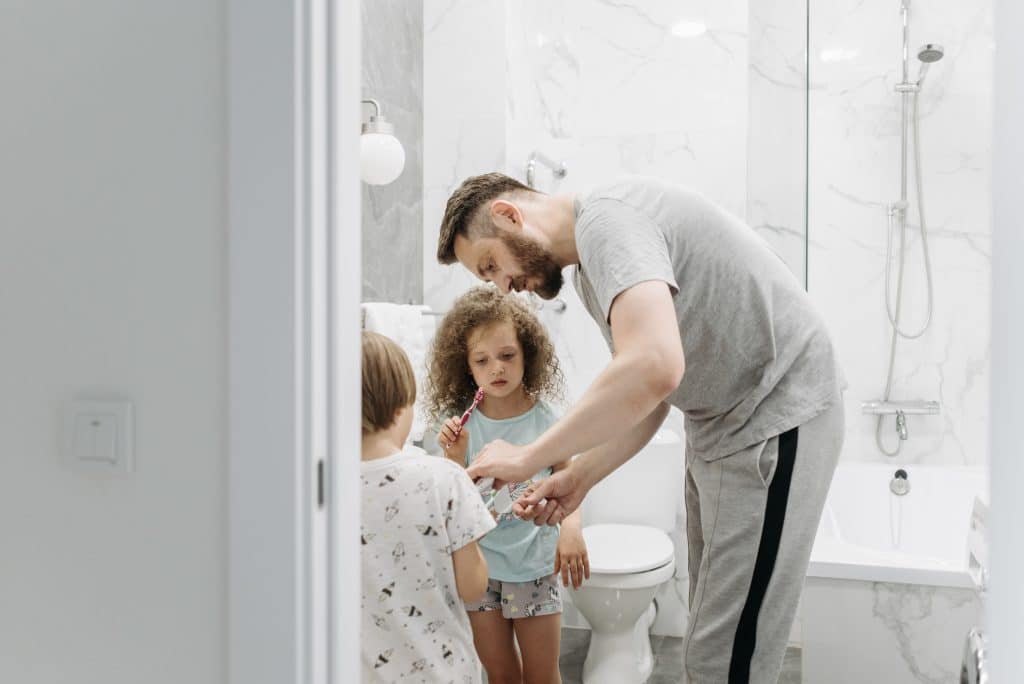Ever felt like you’re speaking a different language when trying to communicate with your child? You’re not alone! This guide is here to help you bridge those gaps and discover how to talk so little kids will listen more effectively. We’ll cover active listening, simple language, positive reinforcement, empathy, and establishing clear routines and boundaries. Get ready to unlock the secrets of positive communication and build a stronger bond with your child.
Table of Contents
Section 1: Active Listening
Active listening is crucial when communicating with neurodivergent kids. It shows your kid that you care about their thoughts and feelings. Here are some tips to enhance your active listening skills:
Maintain Eye Contact
Eye contact is a great way to show your child that you’re focused on them and their message. By maintaining eye contact, you create a sense of connection and trust.
Nod and Use Verbal Cues
Simple responses like “uh-huh” or “I see” encourage your child to continue sharing. These cues let them know you’re engaged and interested in what they have to say.
Reflect and Paraphrase
Repeating what your child said in your own words ensures you’ve understood correctly. This also gives them an opportunity to clarify their message if needed.
Ask Open-Ended Questions
Encourage your child to elaborate and express their thoughts more deeply by asking open-ended questions. This helps them feel heard and valued.
Goally | The Safest Tablet for Kids

Section 2: Using Simple and Clear Language
To communicate effectively with neurodivergent kids, it’s essential to use simple and clear language. Here are some tips on how to talk so little kids will listen:
Keep Sentences Short
Aim for 10-20 words per sentence to make your message easier to understand. Short sentences are especially helpful for kids using Goally, as it helps them process information more efficiently.

Read more: Teaching Listening Skills to a Child
Use Concrete Examples
Provide specific instances to help your child grasp abstract concepts. For example, instead of saying, “be more responsible,” explain what that looks like in a particular situation.
Avoid Jargon and Idioms
Stick to familiar words and phrases to prevent confusion. Neurodivergent kids may struggle with idiomatic expressions, so it’s best to avoid them.
Speak Slowly and Calmly
Give your child time to process your words and respond accordingly. Speaking slowly and calmly also helps create a more relaxed atmosphere for communication.
Section 3: Positive Reinforcement
Positive reinforcement is a powerful tool for encouraging desired behaviors in kids with special needs. Here’s how to incorporate it into your communication:
Praise Specific Actions
Instead of generic compliments, highlight the exact behavior you appreciate. For example, praise your child for completing a task on their Goally device without prompting.
Be Genuine and Timely
Offer praise immediately after the positive behavior and ensure it’s heartfelt. This reinforces the connection between the behavior and the praise, making it more effective.
Use Non-Verbal Cues
Smiles, hugs, and high-fives can also reinforce your child’s good behavior. These non-verbal cues provide additional encouragement and support.
Encourage Self-Praise
Teach your child to recognize and celebrate their own achievements. This helps build their self-esteem and confidence.
Section 4: The Role of Empathy in Communication
Empathy is vital when communicating with neurodivergent kids. Here’s how to foster empathy in your conversations:
Validate Their Feelings
Acknowledge your child’s emotions and let them know it’s okay to feel that way. Validating their feelings helps create a safe space for emotional expression.
Share Your Own Emotions
Open up about your feelings to create a deeper connection with your child. This also models healthy emotional expression for them.

Read More: When Do Children Learn Empathy?
Practice Perspective-Taking
Encourage your child to consider other people’s feelings and viewpoints. This helps develop their empathy and understanding of others.
Offer Comfort and Support
Show your child that you’re there for them, no matter what. Your support and understanding can make a world of difference in their emotional well-being.
Section 5: Establishing Routines and Boundaries
Setting routines and boundaries can help kids with thinking and learning differences feel secure and supported. Here’s how to implement them:
Build Custom Printable Visual Schedules
Is your child having trouble managing their routines? Here’s a free visual schedule builder. Goally’s custom tool allows you to create printable personalized schedules that motivate your child to focus on their tasks. Perfect for morning, homework, and bedtime routines, this free visual schedule builder is easy to use and will help your child reach their full potential.
Click below to make your CUSTOM printable visual schedule! 👇
Create a Daily Schedule
Establish consistent routines for meals, playtime, and bedtime. Using a tool like Goally can help your child stay on track and develop a sense of structure.
Set Clear Expectations
Communicate your expectations and the consequences of not meeting them. Be specific and consistent in your messaging.
Be Consistent
Apply rules and consequences fairly and consistently to avoid confusion. Consistency helps your child understand the boundaries and expectations.
Offer Choices
Empower your child by giving them options within the established boundaries. This promotes autonomy and decision-making skills.
Goally | 100+ Streaming Video Classes
Does your child need some extra guidance on building essential life skills? Goally’s skill building tablet for kids includes a TV app that has the most robust video library of skills training videos for kids. Ranging from content like “How to Brush Your Teeth” to “How to Make Friends at School,” we have dozens of interactive video lessons for kids with thinking and learning differences.

HERE’s a video explaining how to works.
In short, learning how to talk so little kids will listen is a valuable skill for parents of neurodivergent children. By practicing active listening, using simple language, offering positive reinforcement, fostering empathy, and establishing routines and boundaries, you can create a supportive environment that encourages open communication and strong connections with your child. Remember, every child is unique, so adapt these strategies to best suit your child’s needs and watch your relationship flourish.
FAQ’s About How to Talk So Little Kids Will Listen
Why don't young children always listen? Little kids have short attention spans, limited vocabulary, and are still learning how to regulate emotions. They might not understand complex instructions or may be overwhelmed by strong feelings. How can I get my toddler to follow directions? Use simple language, get down to their eye level, and offer choices when possible. Focus on what you want them to DO, rather than what you don't want them to do. What should I do when my child throws a tantrum? Stay calm and acknowledge their feelings without giving in to the demand that triggered the tantrum. Help them calm down before offering solutions or explaining consequences. How can I make communication with my child more positive? Focus on praise and encouragement for good behavior. Instead of scolding, explain calmly what you expect them to do differently next time. Do visual schedules work for young children? Yes! Visual schedules provide predictability and structure, which can help young children better understand routines and expectations.
This post was originally published on 06/08/2023. It was updated on 03/21/2024.

Goally
We help parents teach their kids life skills, like doing bedtime and morning independently. Backed by science, we incorporate evidence-based practices and expert-informed designs in all of our apps and content.






